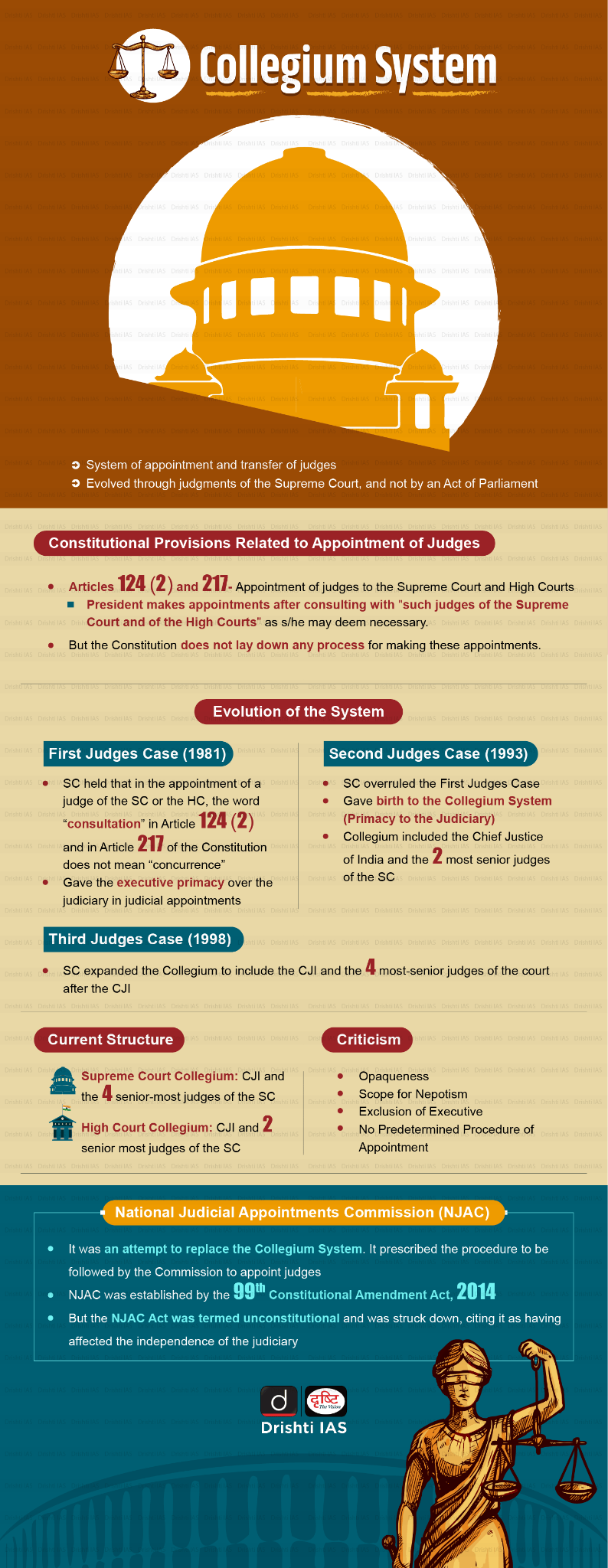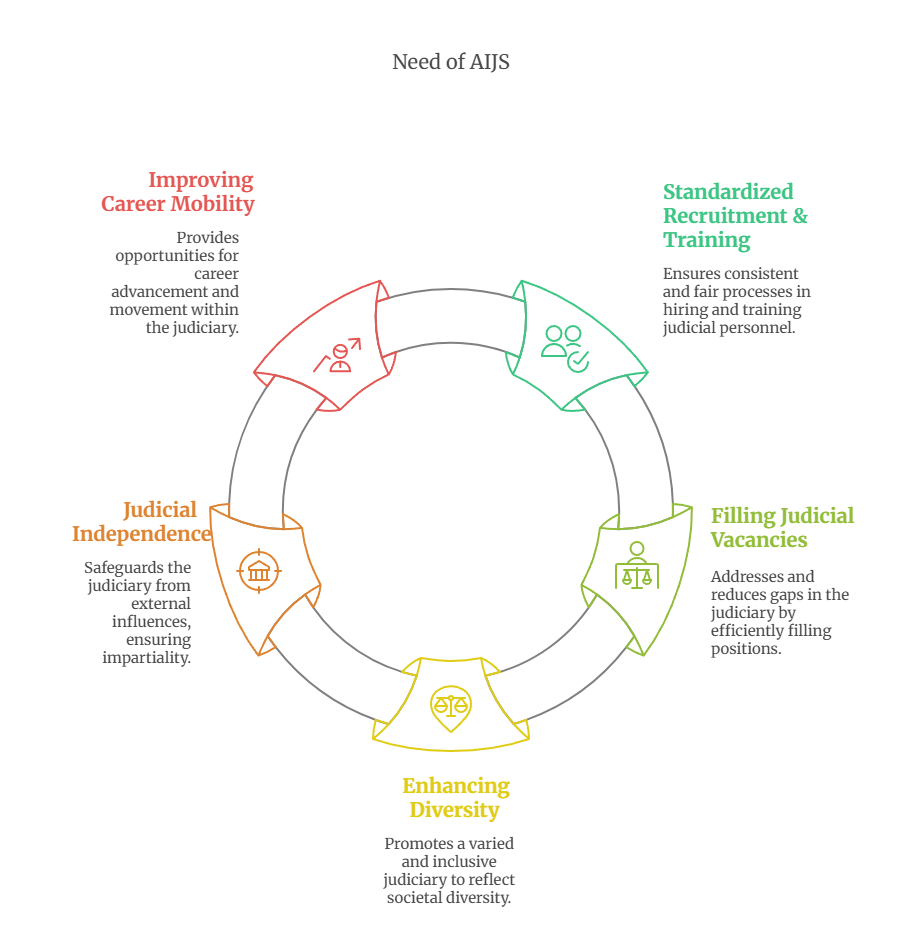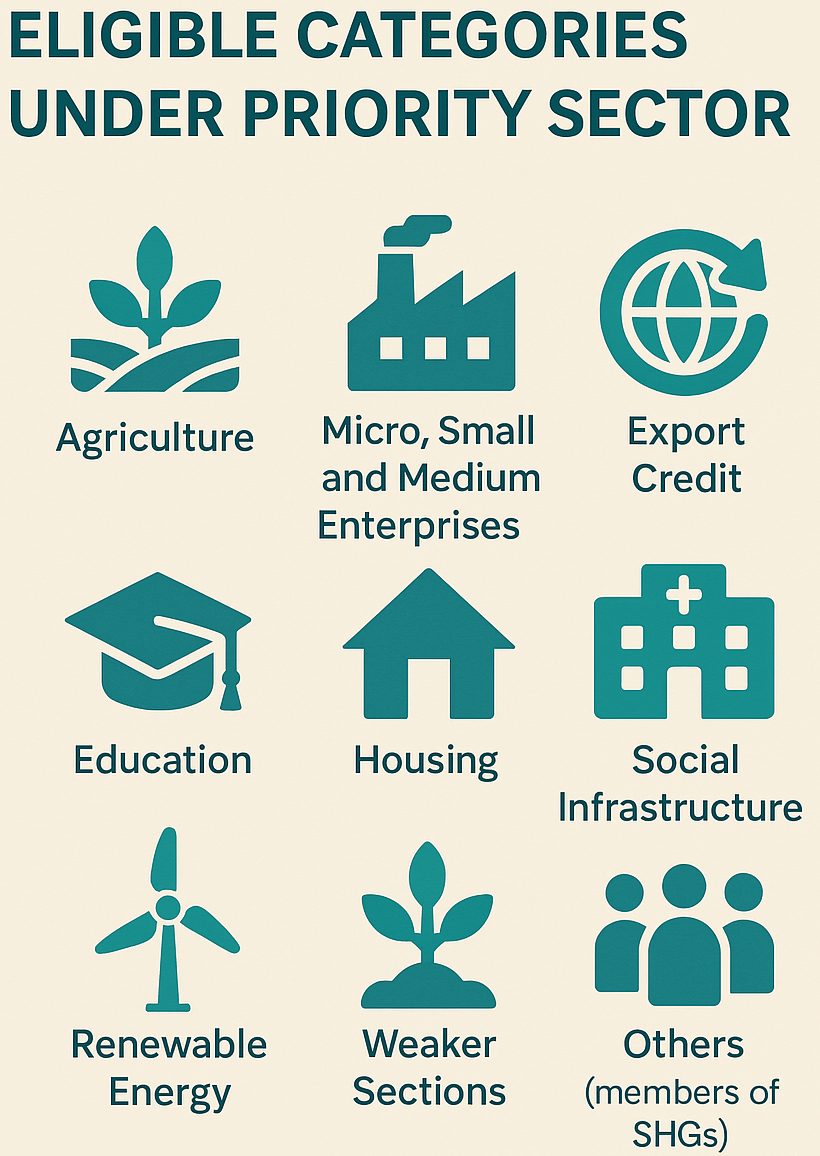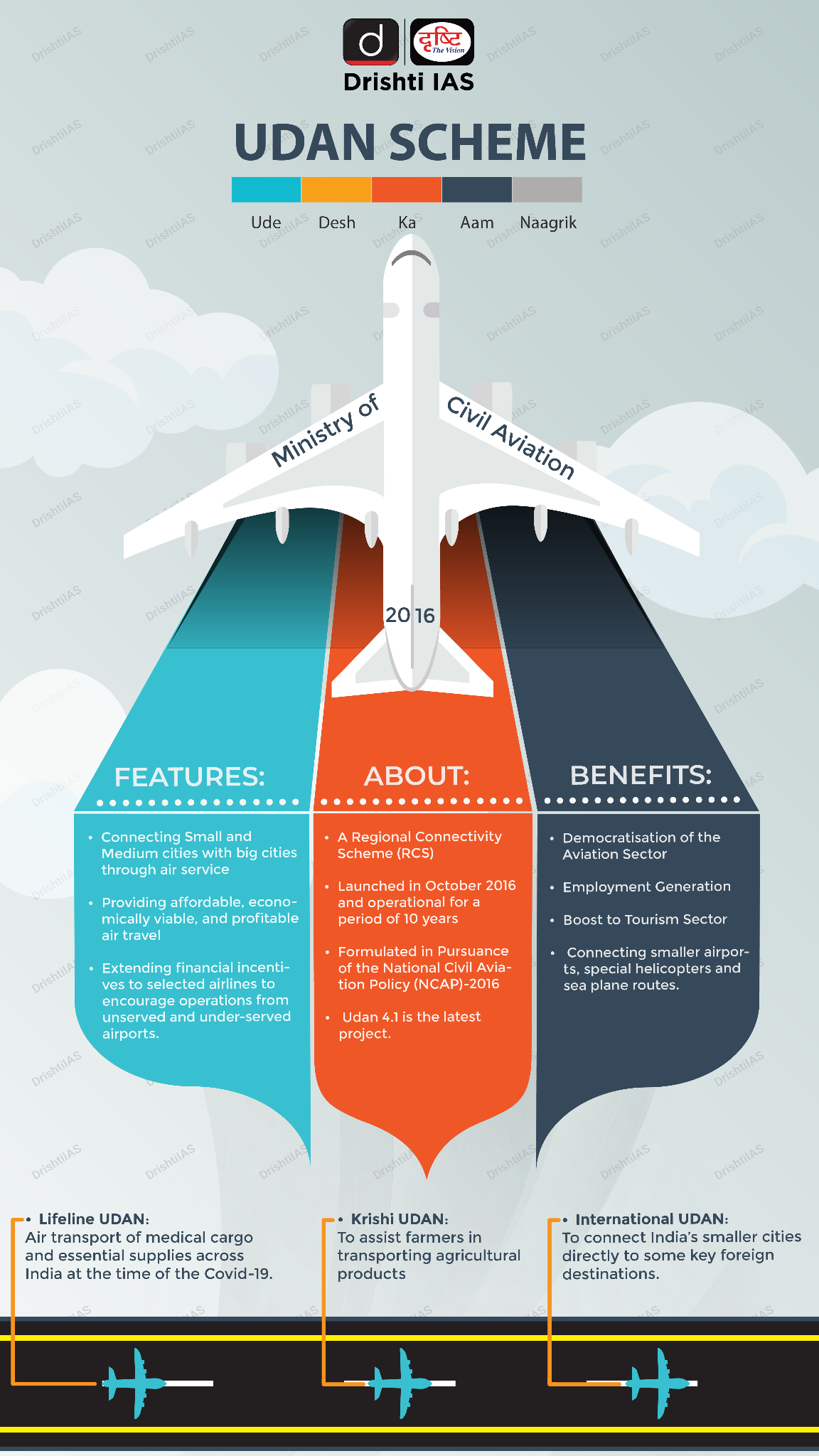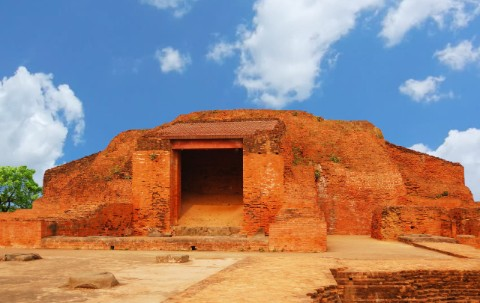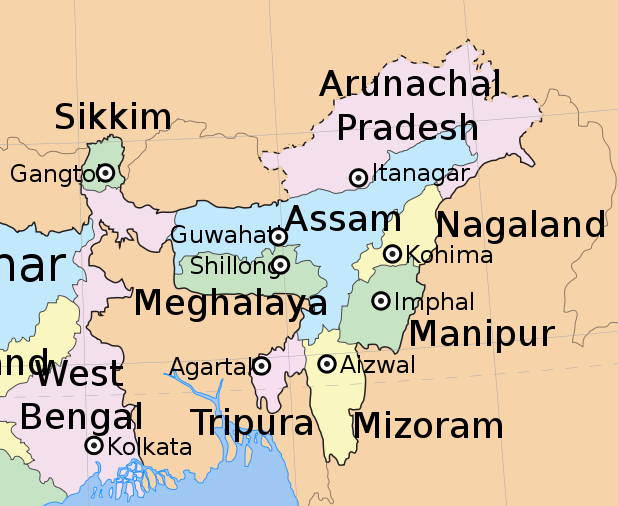Indian Polity
Need of Reforms in Judicial Appointments
For Prelims: National Judicial Appointments Commission (NJAC), All India Judicial Service (AIJS), 99th Constitutional Amendment Act, 2014, NJAC Act, 2014, Basic Structure, District Judges, Parliamentary Standing Committee, Supreme Court, High Court.
For Mains: Collegium system and issues related to it, Need of NJAC and AIJS.
Why in News?
The discovery of cash at Delhi High Court Judge's residence has reignited the debate on judicial appointments and raised questions about the collegium system.
- It has renewed focus on the National Judicial Appointments Commission (NJAC) and All India Judicial Service (AIJS).
How are Judicial Appointments Made in India?
- Appointment of Supreme Court Judges: A Supreme Court (SC) judge is appointed by the President under Article 124 (2) of the Constitution.
- The President appoints the Chief Justice of India after consulting necessary Supreme Court and High Court judges, while other judges are appointed in consultation with the Chief Justice and relevant judges.
- Appointment of High Court Judges: A High Court (HC) judge is appointed by the President under Article 217 of the Constitution.
- The chief justice is appointed by the President after consultation with the chief justice of India and the governor of the state concerned.
- For appointment of other judges, the chief justice of the concerned high court is also consulted.
- In case of a common high court for two or more states, the governors of all the states concerned are consulted by the president.
- Collegium System: It is the system of appointment and transfer of judges (SC and HC) that has evolved through judgments of the SC, and not by an Act of Parliament or by a provision of the Constitution.
What are the Challenges Associated with the Current System of Judges' Appointment?
- No Executive Involvement: Judicial appointments are made solely by judges, with no role for the executive and no oversight, risking secrecy and missed deserving candidates.
- Lack of Merit-Based Selection: No defined criteria for evaluating candidates for the post of judges create room for favoritism and nepotism and leads to Uncle Judge Syndrome.
- Uncle Judge Syndrome refers to nepotism in judicial appointments, highlighting favoritism and lack of transparency which undermines public confidence in the judiciary.
- Weakens Check and Balance: The collegium system centralizes power in the judiciary, disrupting checks and balances and increasing the risk of misuse and lack of oversight.
- Opaque Decision-Making: The collegium system operates without an official secretariat, making it a closed-door process.
- Decisions are made without public scrutiny, and no official records or minutes are publicly accessible.
- Lack of Diversity in Appointments: The higher judiciary lacks adequate representation, particularly of women and marginalized communities.
- Currently, the SC has two women judges, and as of August 2024, women comprise only 14% of High Court judges.
- Delay in Appointments: The collegium system has no fixed timeline, leading to delays through clarifications or reconsideration requests by the President.
- Since 2015, judicial appointments have been delayed, averaging 285 days, up from 274 days earlier.
What is the National Judicial Appointments Commission?
- About: NJAC was a proposed constitutional body to replace the collegium system for appointing judges to the SC and HCs.
- The 99th Constitutional Amendment Act, 2014, and the NJAC Act, 2014, were passed to establish a new system for judicial appointments.
- Composition: The NJAC would consist of:
- Chief Justice of India (CJI) as ex-officio chairperson.
- Two senior-most Supreme Court judges as ex-officio members.
- Union Law Minister as ex-officio member.
- Two eminent persons from civil society, selected by a committee of the CJI, PM, and Leader of Opposition (with one from SC/ST/OBC/minorities/women).
- Key Features:
- Veto Power: Any two members could block a recommendation if they disagreed.
- Appointment Criteria: Included seniority, regional representation, etc.
- Supreme Court’s Ruling in 2015: A 5-judge bench struck down the NJAC by a 4:1 majority, declaring it unconstitutional.
- Majority Opinion: The NJAC violated the basic structure of the Constitution by undermining judicial independence.
- Primacy of judiciary in appointments is part of the basic structure, and the NJAC diluted this by giving the executive (Law Minister) and non-judicial members a veto power.
- The risk of executive interference in judicial appointments was a major concern.
- Dissent (Justice Chelameswar): Supported the NJAC, arguing that the collegium system lacked transparency.
- Majority Opinion: The NJAC violated the basic structure of the Constitution by undermining judicial independence.
Why is NJAC Considered Better than the Collegium System?
- Transparent & Accountable: The NJAC was a structured and documented commission with defined procedures and recorded deliberations.
- Balanced Executive-Judiciary Role: The NJAC included the Law Minister and two eminent members, ensuring executive input without dominance.
- It also had a veto power, allowing any two members to block a candidate, preventing unilateral decisions.
- Better Representation: The NJAC ensured quicker appointments and mandated diversity with one eminent member from SC/ST/OBC, minorities, or women.
- Democratic Legitimacy: The NJAC was passed almost unanimously in the Parliament and was ratified by 16 states.
- International Comparisons: NJAC aimed to align India with global best practices by involving executive and legislative oversight in judicial appointments, as seen in many democracies like the US and UK.
- E.g., In the US, the Senate proposes names and its Judicial Committee conducts confirmation hearings.
What is the All India Judicial Service?
- About: AIJS is a proposed centralized recruitment system for additional district judges and district judges across all states.
- It aims to standardize judicial recruitment, improve efficiency, and ensure uniform quality in lower judiciary.
- Background: The idea was first proposed in Law Commission reports (1958, 1978) and was revisited in 2006 by a Parliamentary Standing Committee.
- Constitutional Basis:
- Article 312 allows for the creation of AIJS, similar to central civil services, through a Rajya Sabha resolution supported by two-thirds majority.
- Article 312(3) restricts AIJS to district judge-level posts and above, as defined in Article 236.
- Article 236 includes various judicial positions like city civil court judges, additional district judges, and sessions judges.
- Article 312 allows for the creation of AIJS, similar to central civil services, through a Rajya Sabha resolution supported by two-thirds majority.
- Need:
- Current Appointment: District judges are currently appointed under Articles 233 and 234 that give states the power to appoint district judges through State Public Service Commissions and High Courts, which oversee the subordinate judiciary.
- Article 233: The Governor appoints, posts, and promotes district judges in consultation with the High Court.
- Article 234: Recruitment of judicial officers (excluding district judges).
Conclusion
The controversy over judicial appointments highlights the flaws in the collegium system, reinforcing calls for reforms like NJAC and AIJS. Ensuring transparency, merit-based selection, and executive-judicial balance is essential for public trust and judicial independence while safeguarding constitutional principles and maintaining checks and balances.
|
Drishti Mains Question: Critically analyze the collegium system of judicial appointments in India. Also, discuss whether the National Judicial Appointments Commission (NJAC) would have been a better alternative. |
UPSC Civil Services Examination, Previous Year Question (PYQ)
Prelims
Q. Consider the following statements: (2019)
- The 44th Amendment to the Constitution of India introduced an Article placing the election of the Prime Minister beyond judicial review.
- The Supreme Court of India struck down the 99th Amendment to the Constitution of India as being violative of the independence of judiciary.
Which of the statements given above is/are correct?
(a) 1 only
(b) 2 only
(c) Both 1 and 2
(d) Neither 1 nor 2
Ans: (b)
Q. What is the provision to safeguard the autonomy of the Supreme Court of India? (2012)
- While appointing the Supreme Court Judges, the President of India has to consult the Chief Justice of India.
- The Supreme Court Judges can be removed by the Chief Justice of India only.
- The salaries of the Judges are charged on the Consolidated Fund of India to which the legislature does not have to vote.
- All appointments of officers and staff of the Supreme Court of India are made by the Government only after consulting the Chief Justice of India.
Which of the statements given above is/are correct?
(a) 1 and 3 only
(b) 3 and 4 only
(c) 4 only
(d) 1, 2, 3 and 4
Ans: (a)
Mains
Q. Critically examine the Supreme Court’s judgement on the ‘National Judicial Appointments Commission Act, 2014’ with reference to the appointment of judges of higher judiciary in India. (2017)


Indian Economy
Revised Priority Sector Lending Guidelines
For Prelims: Reserve Bank of India, Priority Sector Lending, Priority Sector Lending Certificates, Rural Infrastructure Development Fund
For Mains: Priority Sector Lending Evolution, Impact & Challenges, Financial Inclusion through PSL
Why in News?
The Reserve Bank of India (RBI) has issued revised Priority Sector Lending (PSL) guidelines under the Banking Regulation Act, 1949. These updates aim to enhance credit flow to priority sectors and promote inclusive growth.
What are the Revised PSL Guidelines 2025?
- Higher Loan Limits for Education: The RBI has increased the loan limit under PSL for education from Rs 20 lakh to Rs 25 lakh per individual.
- Renewable Energy Loans: Loan limits for renewable energy projects like solar power, biomass, and micro-hydel plants raised from Rs 30 crore to Rs 35 crore per borrower.
- Loans for individual households for renewable energy remain capped at Rs 10 lakh per borrower.
- PSL Targets for Urban Cooperative Banks (UCBs): Revised PSL target for UCBs reduced to 60% (from 75%) of Adjusted Net Bank Credit (ANBC) or Credit Equivalent of Off-Balance Sheet Exposure (CEOBE), whichever is higher.
- Housing sector: Loans limits are increased to boost affordable housing, particularly in Tier-III to Tier-VI cities.
- Expansion of the ‘Weaker Sections’ Category: The list of eligible borrowers under the ‘Weaker Sections’ category has been expanded, it now includes transgenders, promoting financial inclusion and better credit access for underprivileged groups.
Note: ANBC is the total net bank credit after making necessary deductions and adjustments, and CEOBE is the amount representing the credit risk exposure of off-balance sheet items such as guarantees and letters of credit.
What is Priority Sector Lending?
- About: PSL is an RBI-mandated requirement for banks to allocate a set portion of their loans to key priority sectors that face credit shortages but are crucial for inclusive economic growth.
- Priority Sector Lending Certificates (PSLCs) are tradable certificates issued against priority sector loans.
- Evolution of PSL: Gadgil Committee (1969) proposed the 'Area Approach', leading to the Lead Bank Scheme (LBS) for regional credit planning.
- The Nariman Committee (1969) supported the Gadgil Committee's recommendations and recommended that each Public Sector Bank should adopt certain districts as 'Lead Banks' to boost PSL.
- PSL was formalized in 1972 based on the RBI’s Informal Study Group’s report (1971). Initially, no targets were set, but in 1974, banks were advised to raise PSL to 33.3% by 1979.
- Krishnaswamy Committee (1980) recommended a 40% PSL target by 1985, with sub-targets for agriculture and weaker sections.
- Usha Thorat Committee (2009) endorsed the continuation of the LBS for its role in the expansion of PSL.
- PSL Targets for Banks:
|
Bank Category |
Target |
|
Scheduled Commercial Banks (SCBs) & Foreign Banks (with 20+ branches in india) |
40% of ANBC or CEOBE, whichever is higher |
|
Foreign Banks (less than 20 branches) |
40% of ANBC or CEOBE (export Credit: Minimum 32%, and non-export sectors 8%) |
|
Regional Rural Banks (RRBs) & Small Finance Banks (SFBs) |
75% of ANBC or CEOBE, whichever is higher |
- Consequences for Banks Missing Targets: Banks failing to meet PSL targets must contribute to the Rural Infrastructure Development Fund (RIDF) and other designated funds at fixed interest rates, ensuring funds still reach priority sectors.
Note: Foreign banks ( with <20 branches in India) cannot buy PSLC General to meet their 8% target for non-export sectors but can purchase PSLCs for Agri, MSMEs, and Small and Marginal Farmers.
What are the Challenges Regarding PSL?
- Sectoral Imbalances: Banks often prefer lending to MSMEs or housing sectors within PSL as they are commercially more viable.
- Sectors like small and marginal farming remain underfunded, despite being a core PSL component.
- High Non-Performing Assets (NPAs): Banks face challenges in recovering PSL loans, especially in agriculture, leading to high NPAs and financial strain.
- Studies show PSL contributes to higher defaults due to borrower vulnerability and political interference (with initiatives like loan waivers) further discourage lending.
- Low Profitability for Banks: PSL loans usually have lower interest rates and higher default risks, which makes them less profitable for banks.
- Target-Driven Approach: PSL has become target-driven rather than outcome-oriented. Banks focus on meeting quotas, often through indirect or non-priority avenues, which dilutes the real developmental impact.
What Can Be Done to Enhance PSL?
- Performance-Based Incentives: Shift from quota-based lending to an impact-driven approach focused on poverty reduction, livelihood generation, and social outcomes.
- Introduce performance measurement through social impact audits and development indicators instead of just credit disbursal figures.
- Enhance Risk Mitigation : Establishing dedicated credit guarantee schemes for high-risk segments under PSL, such as the Credit Guarantee Fund Trust for Micro and Small Enterprises (CGTMSE), can significantly mitigate the risk of NPAs.
- Digital and Technological Integration: Leverage Big Data to profile borrowers, predict risks, and personalize credit products. Use geotagging to assess farm output, enhancing agri-credit reliability.
|
Drishti Mains Question: How does Priority Sector Lending (PSL) contribute to financial inclusion and economic growth? |
UPSC Civil Services Examination, Previous Year Question (PYQ)
Mains
Q. Pradhan Mantri Jan Dhan Yojana (PMJDY) is necessary for bringing unbanked to the institutional finance fold. Do you agree with this for the financial inclusion of the poorer section of the Indian society? Give arguments to justify your opinion. (2016)


Indian Economy
India’s Aviation Boom
For Prelims: UDAN, Digi Yatra, Foreign Direct Investment, Aviation Turbine Fuel, Sustainable Aviation Fuel, Directorate General of Civil Aviation, Airports Authority of India
For Mains: Development of India's Aviation Industry, Challenges in India's Civil Aviation and Possible Reforms, Regional Connectivity and Inclusive Growth
Why in News?
India is set to host the 81st International Air Transport Association (IATA) Annual General Meeting and World Air Transport Summit in June 2025.
- This event highlights India’s rapidly growing aviation sector, which is projected to become the third-largest aviation market in the world within this decade.
What is the Landscape of India’s Aviation Sector?
- Market Growth and Global Position: India is the 3rd-largest domestic aviation market after the USA and China. India now accounts for 69% of South Asia’s airline traffic.
- India is expected to become the 3rd-largest air passenger market (international and domestic) by 2030.
- The passenger traffic (international and domestic) during FY25 (till September 2024) stood at 196.91 million.
- Employment Generation: The aviation industry directly employs 369,700 people and contributes USD 5.6 billion in economic output.
- When tourism and related industries are included, aviation supports 7.7 million jobs and contributes USD 53.6 billion, which is 1.5% of India’s GDP.
- Infrastructure: Operational airports increased from 74 in 2014 to 157 in 2024, with a target of 350-400 airports by 2047. Additionally, 21 greenfield airports were approved, with 11 already operational.
- Aircraft movement increased at a Compound annual growth rate (CAGR) of 3.85% from 2.05 million in FY17 to 2.67 million in FY24.
- New terminals and greenfield airports are under development (e.g., Bagdogra Civil Enclave, Dehradun terminal).
What are the Key Drivers of India’s Aviation Growth?
- Growing Middle Class: India’s growing middle class has doubled domestic air travel in a decade, reaching 37.6 crore in FY24 with 15% YoY growth.
- This demographic shift has led to increased demand for affordable and accessible air travel, especially on domestic routes.
- Fleet Expansion: Airlines like IndiGo and Air India have placed massive aircraft orders. The number of operational commercial aircraft is expected to reach 1,100 by 2027, up from 771 (2023).
- Tourism and Business Travel: The rise of religious, medical, and adventure tourism, coupled with growing business travel has boosted the overall growth of India’s aviation sector.
- Talent Pool: India's 15% share of women pilots, compared to the global average of 5%, highlights significant progress in aviation gender equality.
- Increasing Private Sector Participation: Public-Private Partnership (PPP) airports have grown from just 5 in 2014 to 24 in 2024. The National Monetization Pipeline includes privatisation of 25 airports.
- Government Initiatives: UDAN (Ude Desh Ka Aam Nagrik) has enhanced regional connectivity by subsidising airfares and developing under-served airports.
- Under UDAN over 519 routes have been operationalised improving accessibility to remote and interior regions across the country.
- Digi Yatra enables contactless, paperless air travel through facial recognition technology for seamless passenger processing.
- The government allows 100% Foreign Direct Investment (FDI) in scheduled domestic airlines (automatic route up to 49%), while Non-Resident Indians (NRIs) can invest 100% under the automatic route in Scheduled Air Transport Service.
- Between 2000 and 2024, India attracted USD 3.85 billion in FDI in the air transport sector.
- India implements a uniform 5% Integrated Goods and Services Tax on aircraft parts to boost the domestic Maintenance, Repair, and Overhaul (MRO) industry, which is projected to reach USD 4 billion by 2030.
What Challenges Does Indian Aviation Face?
- High Fuel Costs: Aviation is a low-margin industry with a global net profit margin of just 3.6%. Aviation Turbine Fuel (ATF) is heavily taxed in India, making up a significant portion of airline operating expenses and adding to the financial burden
- Exchange Rate Volatility: The depreciation of the Indian rupee against the US dollar raises costs for airlines, as key expenses like aircraft leasing and fuel imports are dollar-denominated.
- Sustainability: The global aviation industry is committed to achieving net zero carbon emissions by 2050.
- However, India's efforts are hindered by the slow adoption of Sustainable Aviation Fuel (SAF) and limited green airport infrastructure, impacting its progress in reducing emissions and environmental impact.
- Skewed Regional Connectivity: Despite progress under the UDAN scheme, many Tier-II and Tier-III cities, especially in developing states like Telangana, remain under-connected.
- Airports like Kushinagar (Uttar Pradesh) and Sindhudurg (Maharashtra) struggle due to low demand, forcing airlines to cut operations.
- Regulatory Complexity and Overlaps: Multiple agencies oversee aviation (Directorate General of Civil Aviation, Airports Authority of India, Ministry of Civil Aviation), leading to overlapping mandates and delayed clearances.
- Airlines face complex compliance burdens, including taxation, environmental clearance, and airport charges.
- Underdeveloped Airspace Modernization: Rapid increase in aircraft has not been matched by modernisation of air traffic control and airspace optimisation, especially in busy sectors leading to flight routing and delays.
- Additionally, weak cargo infrastructure hampers freight growth despite rising demand.
What Measures are Needed to Strengthen India's Aviation Growth?
- Rationalisation of ATF Taxation: Bring ATF under the Goods and Services Tax (GST) regime to reduce cascading taxes and provide uniform pricing across states.
- Airspace Modernisation: Expedite the proposed Civil Air Traffic Management System with Advanced-Surface Movement Guidance and Control System to optimize airspace usage and reduce delays.
- Boost Sustainability: India, the world's third-largest ethanol producer and consumer, has strong potential to lead in SAF production via the Alcohol-to-Jet (AtJ) pathway (conversion of alcohols to an alternative jet fuel).
- Incentivising Cargo Infrastructure: Develop dedicated air cargo hubs under Krishi UDAN 2.0 with cold chain and warehousing for perishable and high-value goods to boost rural incomes and exports.
Conclusion
India’s aviation sector is at a historic turning point and is well-positioned to become a global aviation leader. By addressing cost concerns and promoting sustainability, India can ensure long-term success in this crucial industry.
|
Drishti Mains Question: What are the key factors driving the growth of India’s aviation sector? How does it contribute to the economy? |
UPSC Civil Services Examination, Previous Year Questions (PYQs)
Mains
Q. Examine the development of Airports in India through joint ventures under Public–Private Partnership (PPP) model. What are the challenges faced by the authorities in this regard? (2017)

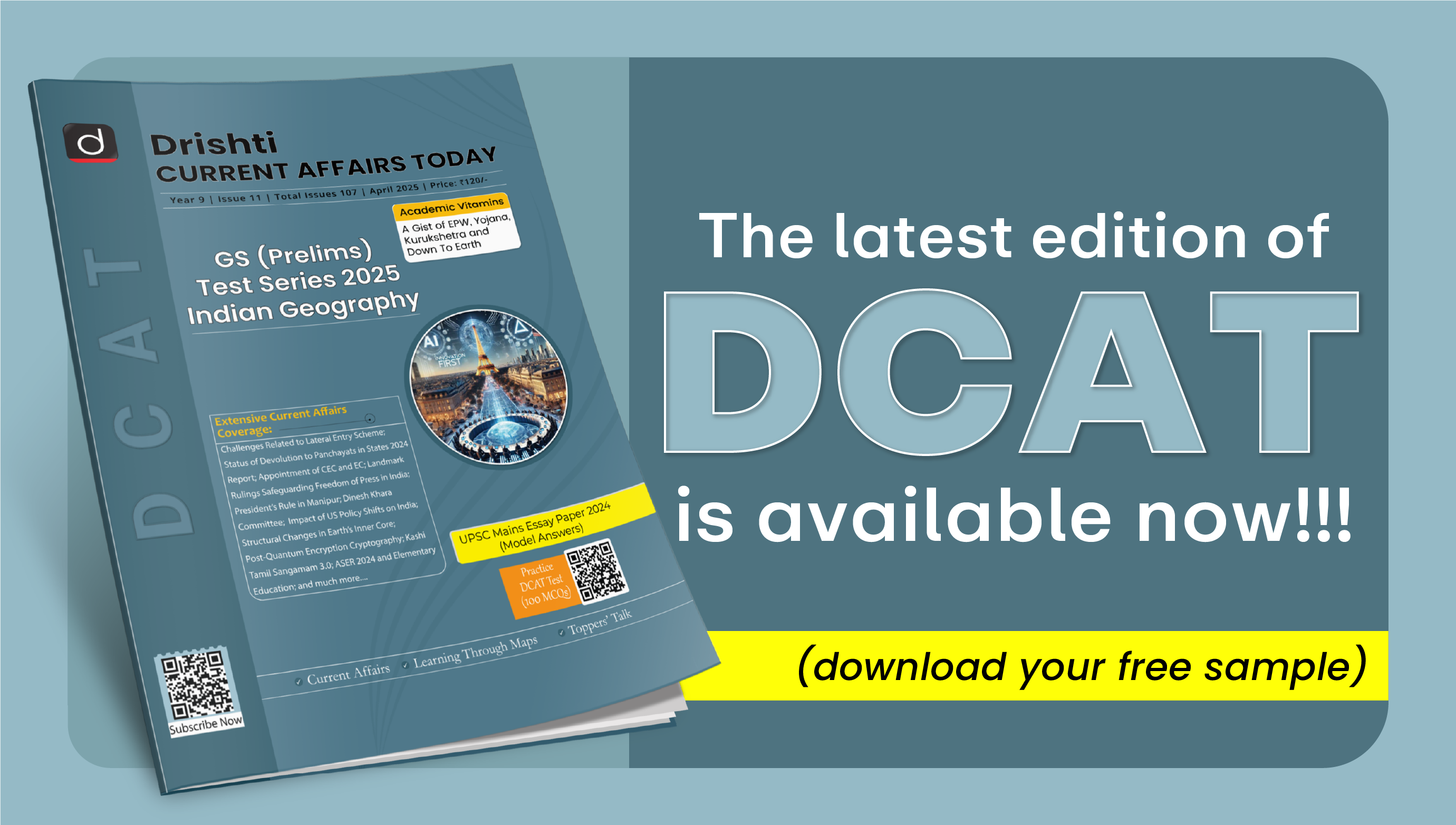
Important Facts For Prelims
Revival of Vikramshila University
Why in News?
Ten years after the establishment of Nalanda University in Rajgir, efforts are underway to revive Vikramshila, another ancient centre of learning in Bihar, with land allocated for a Central University at Antichak village in Bhagalpur district.
- Currently, the Archaeological Survey of India (ASI) has been working to develop the ancient site of the Vikramshila University for tourism.
Nalanda University
- Established: 5th century CE during the Gupta dynasty, likely under Kumaragupta I.
- Legacy: One of the world’s oldest residential universities; taught a variety of subjects including Buddhist philosophy, logic, medicine, and astronomy.
- Link with Vikramshila: Both Nalanda and Vikramshila were patronised by Pala kings and shared scholars and knowledge exchange.
- Revival: Nalanda University was re-established in 2014 as an international university.
What are the Key Facts About Vikramshila University?
- Historical Background: Vikramshila Mahavihara, situated at Bhagalpur, Bihar, was founded by King Dharmapala of the Pala dynasty between the late 8th and early 9th century AD.
- It existed and thrived alongside Nalanda during that period.
- Key Features: Vikramshila was the only university that specialized in Tantric and occult studies. It flourished during the era of Tantricism when both Buddhism and Hinduism included occult sciences and magic as subjects of study.
- During Dharmapala’s reign, Vikramshila reigned supreme and is known to have controlled Nalanda’s affairs as well.
- Subjects such as theology, philosophy, grammar, metaphysics and logic were also taught at Vikramshila.
- The university produced several eminent scholars, including Atisa Dipankara, who played a crucial role in establishing Buddhism in Tibet.
- Decline: Vikramshila, like Nalanda, declined around the 13th century due to the rise of Hinduism and the decline of Buddhism, along with the invasion of Bakhtiyar Khalji.
- Remains include a large stupa, monastic cells, and a library where texts were copied and translated.
Pala Dynasty
- The Pala dynasty, founded by Gopala, ruled Bihar and Bengal from the 8th to 12th century CE.
- "Pala" is a Sanskrit word which means "protector". It was added to the names of the emperors, giving rise to the name "Pala" to the empire.
- Gopala’s reign was marked by a tripartite struggle between the Palas, the Pratiharas and the Rashtrakutas for the control of Kanauj and North India.
- The Palas were devout patrons of Mahayana Buddhism.
- A distinctive Pala art style developed under their patronage, known for exquisite stone and metal sculptures.
- Pala style was transmitted chiefly by means of bronze sculptures and palm-leaf paintings, celebrating the Buddha and other divinities.
UPSC Civil Services Examination, Previous Year Questions Prelims
Prelims
Q. Consider the following events in the history of India: (2020)
- Rise of Pratiharas under King Bhoja
- Establishment of Pallava power under Mahendravarman-I
- Establishment of Chola power by Parantaka-I
- Pala dynasty founded by Gopala
What is the correct chronological order of the above events, starting from the earliest time?
(a) 2 – 1 – 4 – 3
(b) 3 – 1 – 4 – 2
(c) 2 – 4 – 1 – 3
(d) 3 – 4 – 1 – 2
Ans: (c)


Rapid Fire
Concern Over Meghalaya’s Rail Connectivity
After years of opposition from Khasi pressure groups, citing concerns that rail connectivity may lead to a significant influx of outsiders in Meghalaya, Indian Railways has decided to abandon the pending railway projects for Byrnihat and Shillong.
- With this, Shillong will remain the only state capital in the country without railway connectivity.
- Meghalaya has only one railway station (operational since 2014), at Mendipathar in the North Garo Hills.
- Demand for Inner Line Permit (ILP): Pressure groups are demanding the implementation of the ILP regime in the state to regulate the influx of outsiders, as the indigenous tribal population fears marginalization.
- About & Origin of ILP: It is an obligatory official travel document issued by the concerned State Government to allow inward travel of an Indian citizen into a protected area for a limited period.
- Under the Bengal Eastern Frontier Regulation Act, 1873, the British framed regulations restricting the entry and regulating the stay of outsiders in designated areas.
- This was to protect the Crown’s own commercial interests by preventing “British subjects” (Indians) from trading within these regions.
- In 1950, the Indian government replaced the term "British subjects" with "Citizens of India."
- Under the Bengal Eastern Frontier Regulation Act, 1873, the British framed regulations restricting the entry and regulating the stay of outsiders in designated areas.
| Read More: Inner Line Permit, Northeast India |


Rapid Fire
SEBI Doubles FPI Disclosure Limit
Securities and Exchange Board of India (SEBI) has increased the disclosure threshold for Foreign Portfolio Investors (FPIs) from ₹25,000 crore to ₹50,000 crore. Thus, FPIs exceeding this limit must now reveal beneficial ownership and other key investment details.
Rise in Granular Threshold for FPIs:
- Objective: To align regulations with market growth as equity trading volumes nearly doubled since FY 2022-23.
- It is also aimed at increasing capital inflows easing compliance for mid-sized and small FPIs, facilitating ease of doing business.
- FPIs are entities that invest in securities and financial assets such as stocks, bonds, mutual funds, and Exchange Traded Funds (ETFs) in foreign markets to diversify their portfolio and earn returns.
- FPIs in India are governed by SEBI under SEBI (Foreign Portfolio Investors) Regulations, 2019.
SEBI:
- India's securities market regulator, was established in 1988 and gained statutory status in 1992 under the SEBI Act, 1992.
- It oversees stock exchanges, market intermediaries, and investor protection, ensuring market transparency and efficiency.
| Read More: RBI’s Framework for Reclassification of FPI to FDI, Stock Market Regulation |


Rapid Fire
Disaster Management (Amendment) Bill, 2024
Parliament has passed the Disaster Management (Amendment) Bill, 2024 which seeks to amend Disaster Management (DM) Act, 2005.
Key Amendments to DM Act, 2005:
- Disaster Management Plans: National Disaster Management Authority (NDMA) & State Disaster Management Authorities (SDMAs) will now prepare plans instead of National and State Executive Committees.
- Expanded Role: Includes risk assessment (climate risks), technical assistance, setting relief standards, and maintaining disaster databases.
- Regulatory Powers to NDMA: NDMA is empowered to make regulations, specify the number and categories of officers and employees under the Act, with prior central approval.
- Strengthening Disaster Governance:
- Disaster Database: Mandatory national and state-level databases.
- Urban Disaster Management Authorities (UDMAs): States can establish them for capitals and major cities.
- State Disaster Response Force (SDRF): States can constitute SDRFs and define their functions.
- Statutory Status to Key Committees:
- National Crisis Management Committee (NCMC): Nodal body for major disasters.
- High-Level Committee (HLC): Oversees financial assistance to states.
- NDMA Appointments: Can appoint officers, experts, and consultants with central approval.
| Read More: The Disaster Management (Amendment) Bill 2024 |



